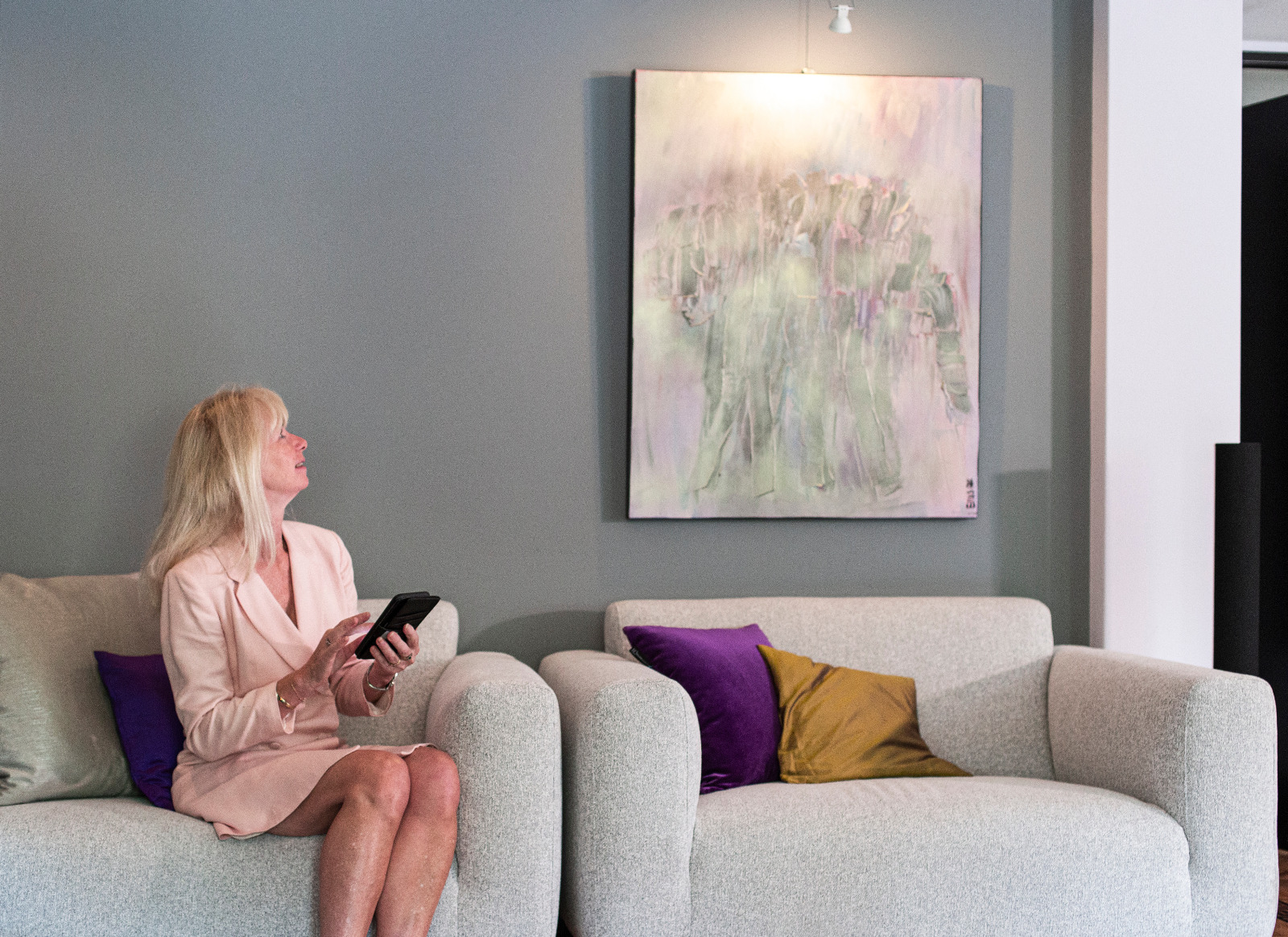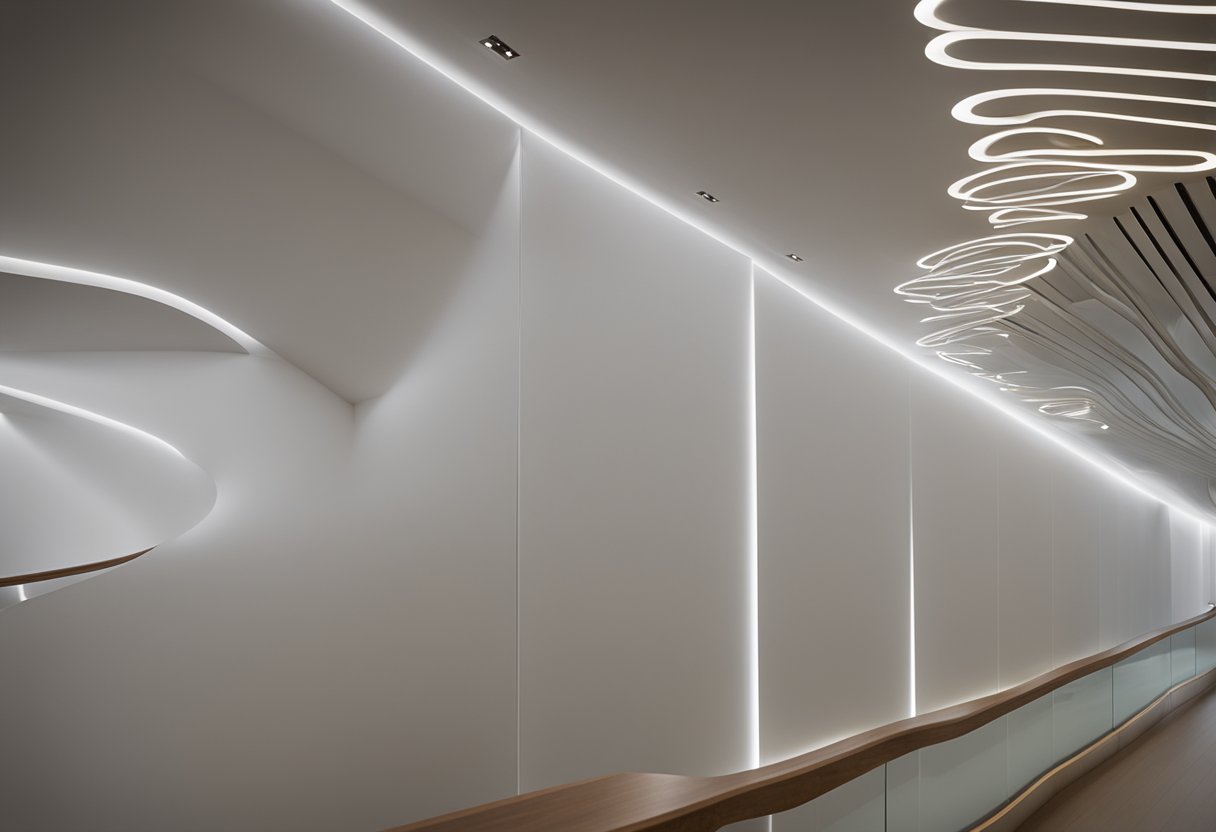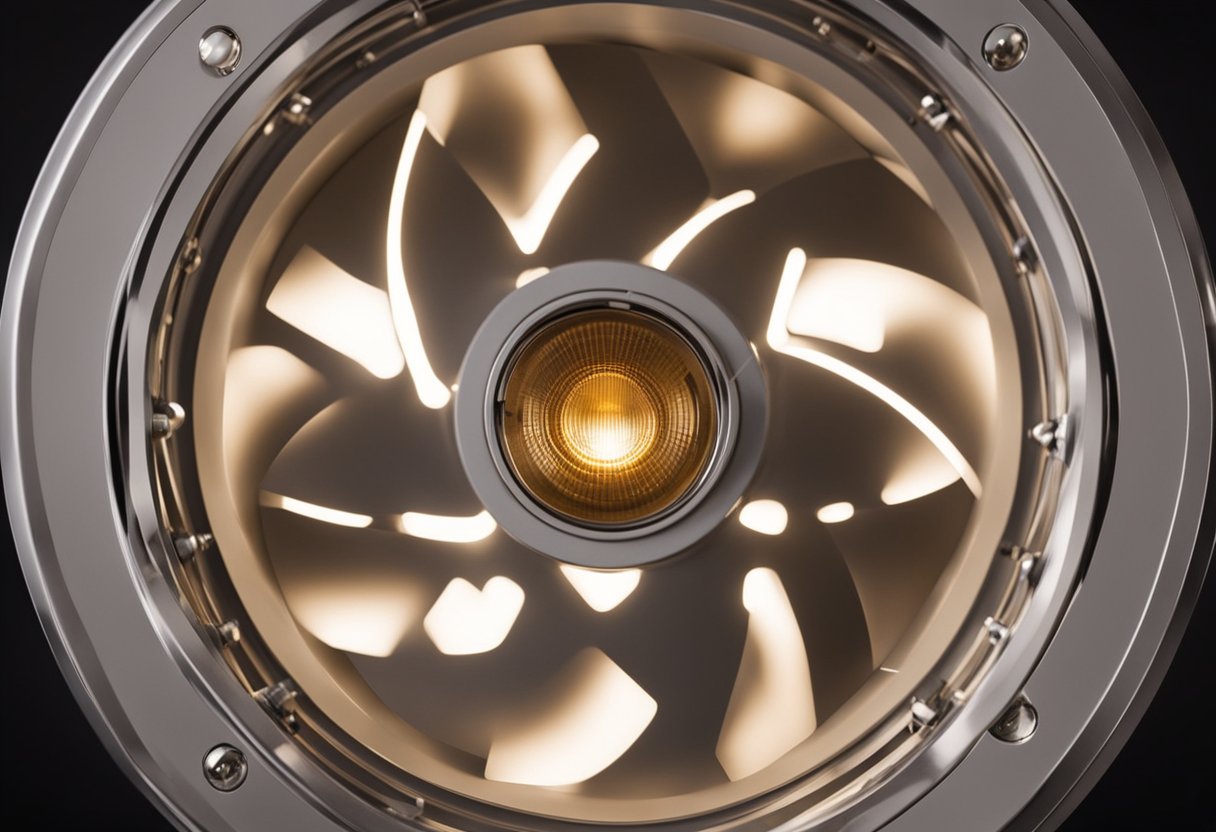
What Types of Lighting Are Best for Highlighting Artwork: Expert Illumination Tips
Lighting plays a critical role in how artwork is perceived and enjoyed in a home environment. Choosing the right type of lighting to accentuate art can enhance colors, textures, and details that might otherwise go unnoticed. Illumination needs to be intentional, balancing both the intensity and the quality of light to ensure that the beauty of the artwork is fully realized without causing damage over time.

There are several lighting options suited for highlighting artwork, such as adjustable ceiling fixtures, recessed lighting, and picture lights. Each type offers its own set of benefits. Adjustable ceiling fixtures provide a focused light source that can be directed precisely at the artwork, while recessed lighting offers a more diffuse glow that can eliminate unwelcome shadows. Picture lights, attached directly above a piece, spotlight the work and add an air of sophistication.
Choosing between LED, halogen, and incandescent bulbs also impacts the display of artwork. LEDs are favored for their longevity and low heat emission, minimizing potential harm to delicate pieces. Halogen bulbs emit a bright, white light ideal for bringing out vibrant colors, albeit with more heat. Incandescent lighting, while being phased out due to energy inefficiency, has a warm glow that complements certain tones in paintings and photographs. The best choice depends on the specific artwork's medium, colors, and the ambient environment in which it is displayed.
Understanding Artwork Lighting Basics

The proper lighting setup can enhance artwork, bringing out its colors and textures effectively. A well-lit piece of art can become a focal point in a room, making lighting choices crucial for any art enthusiast.
Types of Artwork Lighting
Artwork lighting can be categorized by the direction and type of light source used:
-
Accent Light: This is focused lighting that draws the eye to the artwork. It can be created using track lights, picture lights, or ceiling-mounted accent lights.
-
Wall Washers: They provide even illumination across a wide area, making them suitable for lighting a series of pieces or larger artworks.
-
Picture Lights: These are mounted on the frame or the wall directly above the artwork to highlight the piece with a soft, direct light.
When considering how to light artwork, they must also take into account the light's heat output, which can damage sensitive pieces.
Selecting the Right Bulbs
Choosing the right bulbs is essential for artwork illumination:
-
LED Bulbs: Energy-efficient and produce little UV radiation and heat, safeguarding the artwork from potential damage. Their long lifespan also makes them a cost-effective option.
-
Halogen: Offers bright and crisp light that enhances the sharpness and color of the artwork. However, one should be cautious of the heat they emit and the potential for fading.
-
Incandescent: These bulbs produce a warm light, but they're less energy-efficient and emit more heat, posing a risk to delicate works.
Here's a quick comparison of light sources:
| Light Source | Energy Efficiency | Heat Emission | Light Quality |
|---|---|---|---|
| LED Bulbs | High | Low | Excellent |
| Halogen | Moderate | High | Crisp |
| Incandescent | Low | High | Warm |
They should consider whether the lighting mimics natural light, which is the most neutral type of light but can vary based on the time of day and weather conditions. Proper filtering and UV protection are important when using natural light to prevent damage to the artwork.
Designing With Light to Enhance Art

Proper lighting is crucial in accentuating the details and colors of artwork. By understanding the interplay of light properties, one can significantly improve the way art is experienced within a home setting.
Lighting Angle and Beam Spread
The angle at which light hits artwork can impact its appearance, overlaying shadows and highlights that give texture and depth. Ideal lighting typically comes at a 30 to 45-degree angle, reducing glare and hotspots. The beam spread, or how wide light disperses from its source, should be carefully selected to match the size of the artwork:
- Narrow beam spreads (<25 degrees) are great for spotlighting small pieces.
- Wide beam spreads (>40 degrees) cover broader art expansively.
Color Rendering and Temperature
The Color Rendering Index (CRI) is key for lighting artwork. A higher CRI (90+) ensures that the colors of the artwork are vibrant and true to life. The color temperature influences the ambiance of the space:
- Warm lights (2700K–3000K) for a cozy, inviting atmosphere.
- Cool lights (3500K–4100K) for a crisp, invigorating environment.
The choice of color temperature should complement the predominant tones of the artwork and the desired mood the lighting designer aims to create.
The Impact of Lighting on Artwork Mood
Light plays a significant role in defining the emotional tone of artwork. Dark, warm lighting can evoke a sense of intimacy, while bright, cool lighting can create an atmosphere of alertness and presence. Careful consideration of the intended mood can guide the choice of lighting solutions, such as dimmers or filters, to further tailor the impact on the artwork and overall interior design.
Preventing Damage to Artwork Through Lighting
Proper lighting is crucial for showcasing artwork without causing deterioration. Specific features and placement strategies can greatly reduce potential damage.
Avoiding Glare and Shadows
Creating an optimal viewing experience of artwork hinges on eliminating glare and shadows, which not only detract from the aesthetic but can also obscure details and true colors. To reduce glare, lighting should be positioned at a 30-degree angle, providing enough illumination without directly reflecting off the surface. Additionally, using lights with adjustable intensity can help fine-tune the balance between illumination and shadow minimization.
- Placement: Aim for a 30-degree angle to the artwork to mitigate glare.
- Intensity: Use adjustable lighting to control the brightness and soften shadows.
Protective Lighting Features
The use of specialized protective lighting features is key in conserving art. Integrating UV filters in lighting fixtures can shield artwork from harmful ultraviolet light known to fade and degrade materials over time. Furthermore, LED lights are preferable as they emit minimal heat, thereby minimizing heat damage that can warp or crack the artwork.
- UV Protection: Opt for lighting with built-in UV filters.
- Minimizing Heat: Choose LED lights to reduce heat exposure.
Implementing these strategies ensures artwork remains vibrant and intact for years to come.
Lighting Techniques for Different Artwork Types
Choosing the right lighting to showcase artwork is essential, as it can accentuate details, preserve the work, and enhance viewing pleasure. There are several specific techniques that can be applied depending on the types of artwork.
Highlighting Paintings and Prints
For paintings and prints, direct lighting that focuses on the piece is critical. Picture lights are a fitting choice; they can be mounted on the frame or the wall and positioned to minimize glare while highlighting the artwork's colors and texture. Here is how to integrate them:
- Oil Paintings: Preferably use LED picture lights to avoid heat damage.
- Prints: Utilize picture lights with adjustable brightness to prevent fading.
A popular alternative is track lighting. It provides flexibility, as fixtures can be angled to illuminate the artwork effectively, making it ideal for dynamic installations where pieces might be repositioned.
Illuminating Large Artwork and Features
Large artwork and features require a broader light distribution to ensure they are lit evenly. Wall washers are an optimal solution; they cast a wide, soft light across a large surface, eliminating harsh shadows that distract from the art.
Here’s how they can be implemented:
- Position wall washers far enough from the artwork to cover it fully.
- Adjust the beam spread to ensure consistent illumination across the entire piece.
For an extra layer of sophistication, combine wall washers with track lights to bring focus to specific parts of the artwork. This technique is especially effective for large-scale pieces or when creating a feature within a space.
Integrating Art Lighting With Home Design
The right lighting can dramatically enhance the display of artwork in a home setting. It integrates with the overall home design and provides focused attention on pieces of art, blending aesthetics with functionality.
Creating Gallery-Style Interiors
When aiming for gallery-style interiors, one must consider the balance between natural light and artificial lighting. Recessed downlights are often used for their discreet appearance, allowing the artwork to become the focal point. Positioning is critical; downlights should be angled to minimize glare and shadows. In spaces where natural light is present, UV-filtering blinds or films can help protect artwork while still contributing to the gallery atmosphere of the home.
To achieve a cohesive look throughout the home, it's important to match the color temperature of the lights with the natural lighting of the room. In gallery settings, a color temperature of 2700K to 3000K is typically used to create a warm, inviting feel without altering the perceived color of the artwork.
Choosing the Right Fixtures
Selecting the proper lighting fixtures is key to highlighting artwork effectively:
-
Track lighting systems: Offer flexibility and can be adjusted to accommodate changing displays. These systems should be positioned so that each light can be individually directed at each piece of art.
Fixture Type Pros Cons Track Lighting Adjustable, versatile Visible hardware Recessed Downlights Low profile, focused light Fixed position -
Sconces: Ideal for adding a touch of elegance. They should be placed at a height that complements the piece and the room's architecture.
-
Energy efficiency: LED lights are recommended for their long lifespan and low heat output, ensuring both cost savings and protection for sensitive artwork.
When choosing fixtures, consider the beam spread and intensity. A narrow beam can create a spotlight effect, while a wider beam provides a gentle wash of light over a larger area. Additionally, dimmable options offer control over the lighting mood and intensity, making it easier to adjust for different times of day or occasions.
By thoughtfully selecting and positioning lighting fixtures, one can seamlessly incorporate art lighting into their home design, ensuring that each piece of artwork is presented in its best light.
Frequently Asked Questions
Proper lighting is crucial for the display and preservation of artwork. Whether one is working on a painting, setting up an art gallery, or photographing art, the lighting choices can greatly affect the visual impact and long-term condition of the artwork.
How can I best illuminate paintings when working on them at night?
One should consider using LED lamps with adjustable color temperature settings. LED lamps provide a consistent light that can mimic natural daylight, which is ideal for working on paintings after dark without altering the appearance of colors.
What are the optimal lighting conditions for an art gallery setting?
Art galleries should use lighting that has a high Color Rendering Index (CRI) to ensure that the artwork's colors are accurately displayed. Typically, a mix of accent lighting from track lights or ceiling-mounted spotlights combined with ambient lighting works well.
Which type of picture lights should I consider for displaying art in my home?
Picture lights that offer a soft, diffused light without emitting UV rays are the best options for home display. LED picture lights are often recommended due to their low heat emission and energy efficiency.
What techniques are recommended for lighting artwork for photography?
For photographing artwork, evenly distributed, diffused light minimizes glare and shadows. Using a combination of softbox lights positioned at a 45-degree angle to the artwork can yield professional-quality results.
How should I choose a battery-operated light for paintings?
When selecting a battery-operated light for paintings, look for one with adjustable brightness and color temperature. Ensure that it has a long battery life and is easy to install without damaging the artwork or the walls.
What are the ideal light colors to enhance visual art and sculptures?
Neutral white light in the range of 2700K (warm white) to 4000K (cool white) is typically ideal for enhancing visual art and sculptures, as it closely resembles natural light without distorting colors.